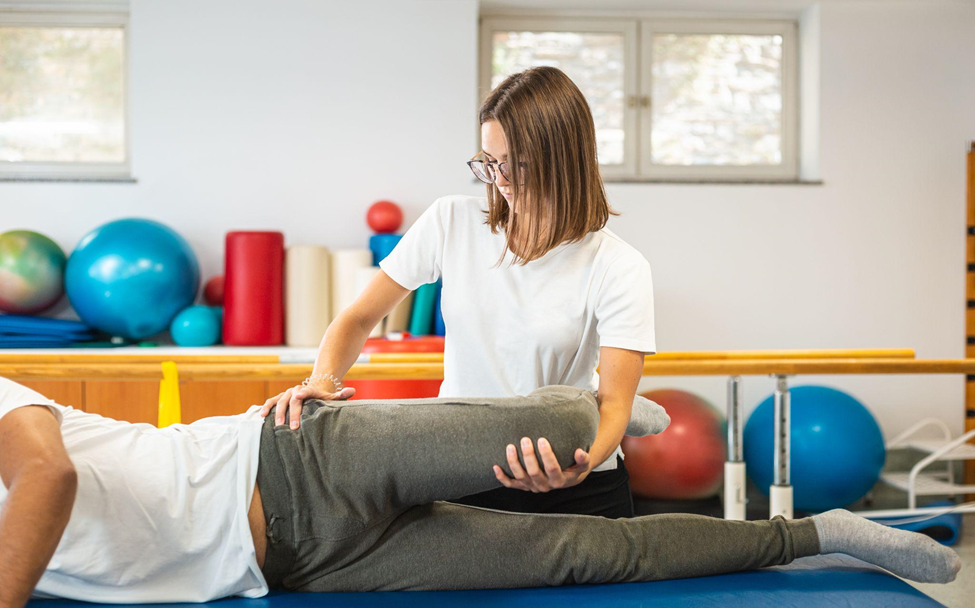Sciatica pain is a common condition characterized by a sharp, shooting pain that radiates along the sciatic nerve, which runs from the lower back down through the buttocks and into the legs. It can significantly impair one’s quality of life, making everyday activities challenging and uncomfortable. Fortunately, there are several effective solutions available to alleviate sciatica pain and promote healing. In this blog, we will explore the common causes of sciatica, the benefits of physical therapy, and lifestyle and home remedies that can help manage and prevent sciatica pain.
Sciatica pain is often caused by compression or irritation of the sciatic nerve. Some of the most common causes include:
- Herniated Disc: When a disc in the spine bulges or ruptures, it can put pressure on the nearby nerves, including the sciatic nerve, leading to pain and discomfort.
- Spinal Stenosis: This condition occurs when the spinal canal narrows, causing the nerves to become compressed. Spinal stenosis commonly affects older adults and can result in sciatica symptoms.
- Piriformis Syndrome: The piriformis muscle, located in the buttocks, can become tight or spasmodic, leading to sciatic nerve compression. This condition is often caused by muscle imbalances or overuse.
- Spondylolisthesis: When a vertebra slips forward and puts pressure on the nerves, it can result in sciatica pain. Spondylolisthesis can be caused by age-related wear and tear, trauma, or certain medical conditions.
Physical Therapy for Sciatica Pain Relief
Physical therapy is an essential component of treating sciatica pain, as it focuses on restoring strength, flexibility, and function to the affected areas. Here are some ways physical therapy can provide relief:
- Exercise Programs: A skilled physical therapist can design an individualized exercise program to alleviate pain and strengthen the muscles that support the spine. This may include stretching, aerobic exercises, and specific exercises targeting the core and lower back muscles.
- Manual Therapy: Hands-on techniques such as massage, joint mobilization, and spinal manipulation can help reduce pain, improve mobility, and release tension in the muscles.
- Posture and Body Mechanics: Learning proper posture and body mechanics can help relieve pressure on the sciatic nerve and reduce the risk of further injury. Physical therapists can teach patients how to maintain a neutral spine and provide guidance on ergonomics at home and work.
- Education and Prevention: Physical therapists educate patients about their condition, helping them understand the causes of sciatica and providing strategies for preventing future episodes. This may include guidance on weight management, correct lifting techniques, and exercises to maintain a healthy spine.
Lifestyle and Home Remedies for Sciatica
In addition to physical therapy, there are several lifestyle and home remedies that can complement treatment and provide relief from sciatica pain. Here are some effective strategies:
- Hot and Cold Therapy: Applying a hot or cold pack to the affected area can help reduce inflammation and alleviate pain. Use a cold pack for the first 48 hours after the onset of pain, followed by hot packs or a warm bath to relax the muscles.
- Regular Exercise: Engaging in low-impact exercises such as swimming, walking, or yoga can help strengthen the back and abdominal muscles, promoting proper spinal alignment and reducing the risk of sciatica pain.
- Maintaining a Healthy Weight: Excess weight can put additional stress on the spine and exacerbate sciatica pain. Adopting a healthy diet and engaging in regular exercise can aid weight management and alleviate pressure on the sciatic nerve.
- Ergonomic Modifications: Making adjustments to your workplace or home environment can help reduce strain on the spine. Ensure that your chair provides proper lumbar support, and use a standing desk or take frequent breaks to avoid prolonged sitting.
- Mind-Body Techniques: Practices such as meditation, deep breathing exercises, and yoga can help reduce stress and promote relaxation, which can alleviate muscle tension and reduce sciatica pain.
Conclusion
Sciatica pain can be a debilitating condition that affects numerous individuals. Fortunately, there are effective solutions available to alleviate the symptoms and promote healing. Physical therapy plays a crucial role in the management of sciatica pain, providing targeted exercises, manual therapy, and education to address the root causes. Lifestyle and home remedies complement these efforts, focusing on maintaining a healthy weight, practicing good posture, and implementing self-care strategies. By combining these approaches, individuals suffering from sciatica pain can find relief and regain their quality of life. Always consult with a healthcare professional for a comprehensive evaluation and personalized treatment plan for your specific condition.

